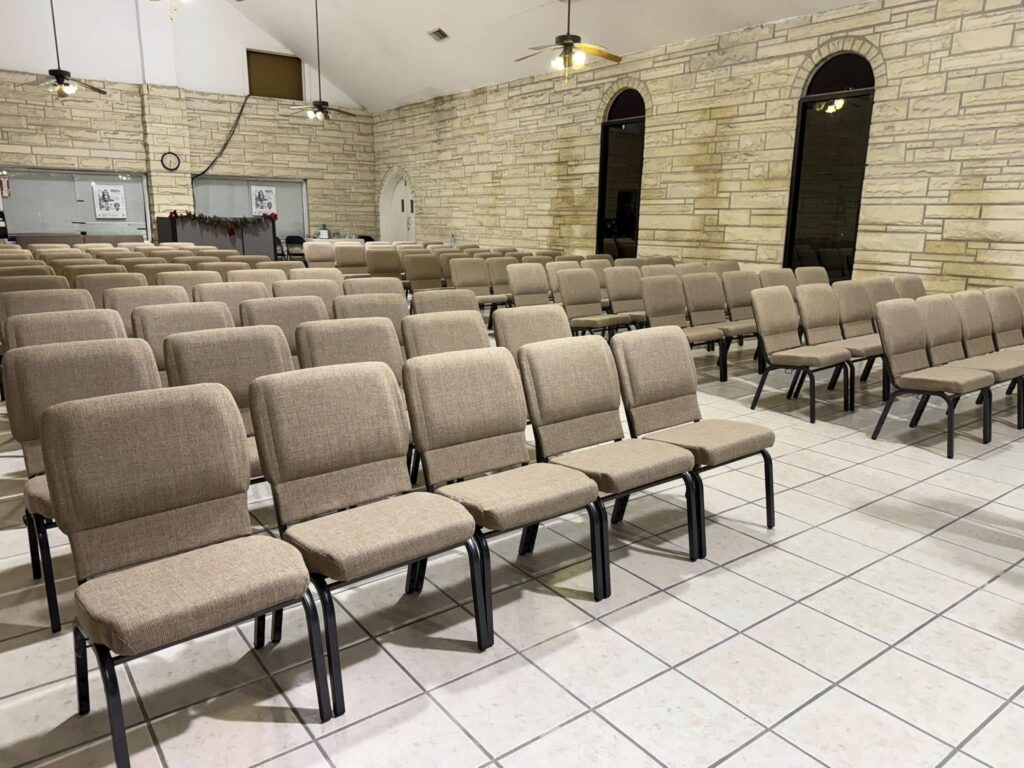Caring For Your Fabric Chairs
Our chair fabrics are made of 100% polyolefin fiber. Dry or wet soil can be easily removed with regular prescribed maintenance procedures on fabrics of 100% Polyolefin fiber. Since Polyolefin fibers absorb virtually no moisture, most stains remain on the surface of the fabric and thus are easily removed by conventional means.

Recommended Cleaning Procedures
- Treat spots and stains promptly to prevent any damage to the fabric and facilitate easy cleaning. Blot wet spills with an absorbent paper towel or cloth. If the spill has crusted, tap the spot to break up the encrustation and remove as much as possible before using a cleaning agent.
- Try to determine the nature of the stain so the appropriate cleaning agent can be chosen.
- Use the least amount of the appropriate cleaning agent necessary to remove the stain. Too much moisture leads to quicker resoiling and damages the component materials. Be sure to dry the fabric thoroughly after each step of treatment to prevent resoiling.
- Spot the fabric with cold water to determine if fabric has been treated with a fluorocarbon such as Teflon. If the fabric repels the water this means it is fluorocarbon protected. Follow this procedure:
- Blot the stained area with a clean, dampened cloth (water only). Dry thoroughly and check for stain.
- If still stained, repeat spot cleaning using a dry cleaning type solvent such as 1,1,1, trichloroethane.
- If stain persists, repeat procedure using the appropriate cleaning agent for the suspected content of the stain as shown in the chart opposite.
- If the cold water is absorbed by the fabric, this indicates that the fabric is not fluorocarbon protected and should be handled as follows:
- Wet entire cushion panel with a clean, damp cloth to see if the stain can be removed by water alone.
- If not successful, professional cleaning is advised. The Bane-clene system, including cleaner/vacuum extractor and specialized cleaning agents, was found to be effective in cleaning polyolefin upholstery.
|
Stain |
Cleaning Agent |
|---|---|
|
Chocolate, Blood |
A, B, C |
|
Grape Juice, Ink (washable), Berry Stain, Mucilage |
A, B |
|
Vomit, Water Colors |
A, B, F |
|
Rubber Cement, Shoe Polish |
A, B, D |
|
Tea, Milk, Mustard, Gravy, Egg, Cola Drink |
B |
|
Catsup, Carbon Black, Butter, Chewing Gum, Linseed Oil, Nail Polish |
D |
|
Crayon, Lipstick, Paint(Oil) |
E |
|
Beer, Urine |
B, F |
|
Wine |
A, C, F |
|
Paint (Latex) |
A, B, E |
|
Oil |
D, E |
|
Iron Rust |
A, G |
|
Ink (Permanent/Ball Point) |
B, D, E |
|
Furniture Polish |
B, E |
|
Coffee |
B, D, F |
Key to Cleaning Agents
- A Water
- B Detergent solution
- C Detergent/ammonia (3-6%) solution
- D Volatile-type solvent
- E Paint, oil, or grease remover
- F Undiluted white vinegar
- G Citric or oxalic acids
This information (Courtesy of Absecon Mills) is made available to you as a guide to the care and maintenance of 100% Polyolefin fabrics. It is based on the best available data and is subject to revision upon the receipt of updated technology. Neither Uniflex nor Absecon Mills makes any guarantee as to the results and assumes no responsibility in regards to this information, nor are they responsible for any damage sustained by the component materials.

